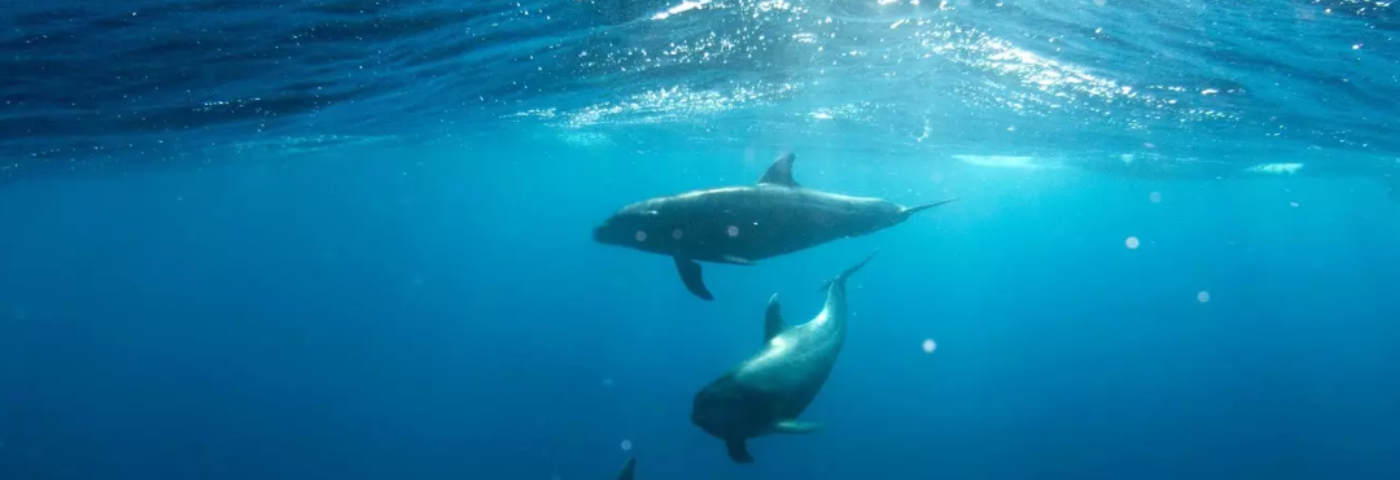The Exploration of Ocean Data
The ocean is a big part of modern society; thus, exploration of ocean data is necessary to create new solutions. The New Blue Economy, as described by the United States’ National Oceanic and Atmospheric Administration (NOAA), is a knowledge-based economy that uses ocean data and information to tackle societal problems and provide innovative solutions. They stated that it is critical to draw on data sources from across the government, universities, business, and ocean communities, as well as indigenous knowledge, to ensure that accurate data reaches the right people in a timely manner.
Ocean currents bring nutrients and oxygen from the poles to the coasts; the ocean absorbs 30 percent of the carbon dioxide that is released into the atmosphere; ships carry 90 percent of the world’s products; and fiber-optic cables laid on the ocean floor connect the worldwide web. Before the 20th century, it was difficult and expensive to explore and survey the ocean, so many of these links were unknown. But today, landers, buoys, ships, satellites, drones, and autonomous underwater vehicles (AUV) equipped with oceanographic sensors may collect as much data in a single year as was collected in the previous century.
A better image of what’s happening under the waves and the ability to imagine innovative ocean solutions will come from not simply expanding the volume of ocean data but also our ability to discover and connect it.
The WhaleSafe Project
One example of time-sensitive data that must be broadcast instantly concerns maritime safety. Whale-ship collisions, which often result in the deaths of whales, are one difficulty that mariners face. For this reason, the WhaleSafe project at the Benioff Ocean Science Laboratory combines acoustic and visual data with model forecasts to deliver up-to-date information on whale whereabouts in real time.
There is a large variety of data sources that WhaleSafe draws from, all of which have varying degrees of data quality, interoperability, and access regulations. Using an application programming interface (API), the company’s research and engineering staff transforms the raw data into a usable product that can be incorporated into a variety of user-created visualisation tools and dashboards to aid in ocean management and conservation efforts. Now, WhaleSafe is only available in a handful of locations, but in the future, integrated data solutions like WhaleSafe could be implemented in busy ports everywhere.
Get your ticket for Oi Americas
Join the oceanology community in San Diego from 14–16 February 2023 and discover emerging marine science technology.
Seafloor Mapping
Mapping the ocean floor is another developing technology. To establish what can and cannot be done safely in the ocean, we need accurate maps of the seafloor to govern the exploration, extraction, and use of underwater resources.
The ocean’s state can be shown on a grander scale through projects like the EU Digital Twin and the Allen Coral Atlas, which combine data from numerous sources. The goal of the Nippon Foundation-GEBCO Seabed 2030 project is to map the ocean floor and learn more about it. Together, many different governments, oceanographic organisations, academic institutions, ocean philanthropies, and private companies are working toward the goal of mapping the entire seafloor by the year 2030 as part of Seabed 2030, an initiative formally endorsed by the United Nations Decade of Ocean Science for Sustainable Development.
With the GEBCO grid, anyone will be able to freely access data from all of the ocean floor thanks to a variety of survey technologies and sources, such as crowdsourcing bathymetry and data donations from private companies. With eight years left until completion, the project has expanded global bathymetric coverage from 6% to 23.4%.
Learn more about the GEBCO Seabed 2030 Project
Other Ocean Data Innovations
- In order to recognise the most ground-breaking developments in ocean data, the World Economic Forum (WEF) has launched the Uplink Ocean Data Challenge. EMODnet, HUB Ocean, Fugro, Planet, Canada’s Ocean Supercluster, Tidal – X, and the Economist Impact’s World Ocean Initiative are some of the organisations we hope to collaborate with.
- The newest UN Decade of Ocean Science and Sustainability Call for Actions prioritises projects that strengthen global data capacity and enhance the ocean’s digital infrastructure.
Innovations in ocean data gathering, interpretation, access, and communication are required to break through boundaries in the data economy and generate usable insights. Whether it’s climate modellers or local fishermen, the best inventions are those that are co-designed with the people who will be using them.
It’s time to take a step toward the conservation of oceans and waterways. Discover the future of ocean technology and connect with the world’s marine science and ocean technology communities with Oceanology International Americas.
Get your ticket for Oi Americas
Join the oceanology community in San Diego from 14–16 February 2023 and discover emerging marine science technology.


